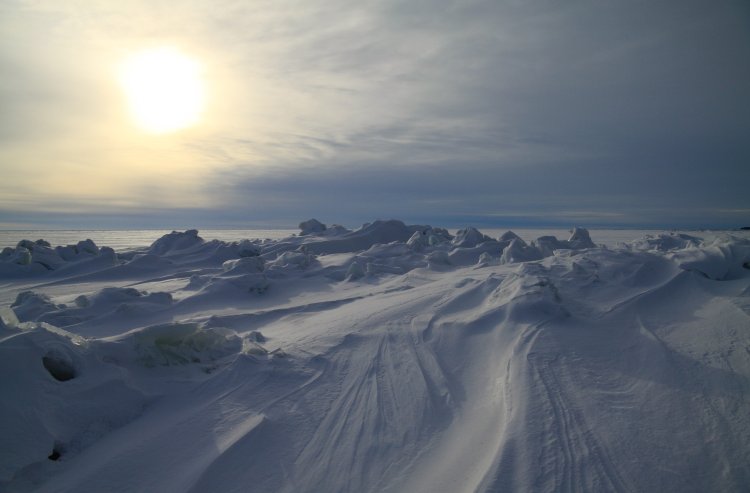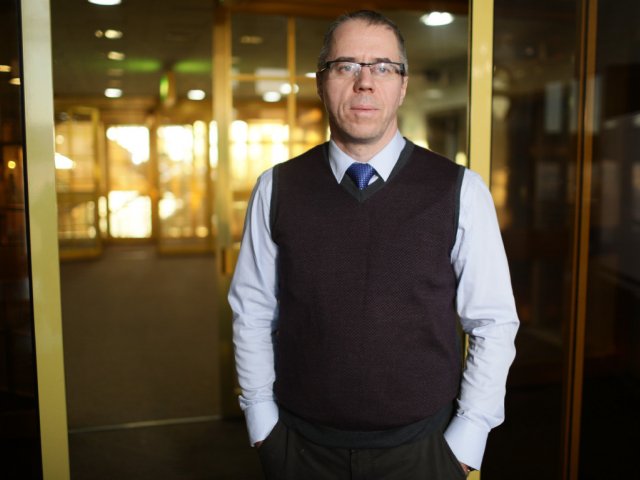Everlasting frosts, strongest winds on the planet, detachment from the rest of the world…, one would think that pursuing science in Antarctica, a continent branded the world’s refrigerator, is not a job for the woman. But as history has repeatedly proven, women can also be sturdy and incredibly efficient even in the most severe conditions. Our compatriot Maria Vasilyevna Klenova paved the way to the coldest continent of the planet.
Geologist, mineralogist and MSU graduate (1924) Maria Klenova had been dreaming about Arctic and Antarctic research for many years. She was not afraid of colds, polar bears or that she would be the only woman among her male colleagues. And if in the case of the Arctic Klenova was lucky, as in 1925, she went on the Arctic expedition aboard the Perseus, she fared less well in her Antarctic pursuits, because influential male scientists refused to take her to Antarctica! Besides, there had not been any precedents in the world before for a woman to go to Antarctica and not as a sign of support for the husband but as a full-fledged researcher.
However, Maria Klenova, a strong and persevering woman who survived the Great Patriotic War, rejected the refusal and she decided to make it to the Cold Pole no matter what. Klenova approached First Deputy Chairman of the Council of Ministers of the Soviet Union Anastas Mikoyan and Arctic explorer Ivan Papanin. “I am not a woman, I am a professor!” Klenova said back then. As a result, the adamant researcher joined the 1955 Antarctic expedition.
At that point in time, Klenova had a vast expeditionary and scientific experience. The explorer took part in ten expeditions aboard the Perseus. She saw the Kara Sea, Barents Sea and other northern seas. She was first to map the seabed of the Barents Sea and developed a classification of sea grounds used to this day. Furthermore, in 1929, she embarked on a voyage aboard the Perseus as the world’s first ever female chief of the expedition.
Klenova was no stranger to the title of the first woman in different fields of science. For example, two years earlier, in 1927, she became the world’s first woman to have dipped into the water to reach the depth of 50 meters in a three-seat hydrostat. Prior to her visit to Antarctica, Maria Klenova published her famous book Geology of the Sea (1948) and became the founder of this branch of science in the Soviet Union. Thus, her Antarctic voyage was a logical extension of Klenova’s impressive record of accomplishments.
The Complex Antarctic Expedition (CAE) operating under academic supervision of the Academy of Sciences of the USSR was tasked with setting up a base in Antarctica and choosing a convenient place for research stations inside the continent. Maria Klenova worked on an equal footing with men and never complained about harsh environmental conditions, but tried to keep to herself. Her Antarctic voyage she so long wished for bore important scientific fruit: Klenova once again became the world’s first woman, as her works contributed to the first Antarctic atlas born in collaboration of scientists.
After the Antarctica, the expedition also visited Australia and New Zealand where Maria got a warm reception and not without astonishment, of course. Local newspapers called her nothing less than the old sea dog. The famous Soviet polar explorer captured the attention of foreign colleagues and she, as a fluent speaker of several languages, found common ground with scientists without much of a hassle.
Maria Klenova spent a total of 30 years of her life to exploration of the polar regions. She joined the Board for Antarctic Studies of the Academy of Sciences of the USSR and became an honored worker of science of the RSFSR and recipient of the I.M. Gubkin award and other prestigious awards.
In 1955, Maria Klenova moved to the P.P. Shirshov Institute of Oceanology of the Russian Academy of Sciences (current name of the institute). Her research associates from the Institute published many articles telling the story of this extraordinary woman.
“The scope of her research interests was incredibly broad. She took part in numerous sea expeditions in Russia, Arctic and Antarctica, in the Atlantic and Pacific Oceans, dealt with a variety of problems varying from methodological, organizational and applied to strictly theoretical ones, such as sedimentation processes and studies of chemical and lithological properties, gaseous regime, suspended matter and organic substance, relief origin, seaboard geology and geology of the Mid-Atlantic Ridge, several philosophical problems of the marine geology. She is the author of the world’s first monograph Geology of the Sea, which is still a handbook for marine geologists.” (Source of the quote: P.P. Shirshov Institute of Oceanology of the Russian Academy of Sciences).
Expedition members coined a loving nickname for Maria Vasilyevna – Marva. During her lifetime, people told legends and stories about her, in which she scintillated witticisms and optimism. People said that Klenova was a dreamer and called her “a grandmother of the marine geology.”
Maria Klenova was an extraordinary person. She had cats, whose opinion was reportedly taken into account when she hired employees. “They always sense a good soul,” the geologist said.
The Klenova Valley, an oceanographic valley discovered in the north of Greenland, mountains on Novaya Zemlya, Klenova impact crater on Venus, the Professor Klenova, a research and production vessel (in service until 2004) and the Klenova Seamount east of Salvador were all named after Maria Klenova.
Maria Vasilyevna Klenova passed away on 6 August 1976 at the age of 78.
Photo: pelson / 123RF






















